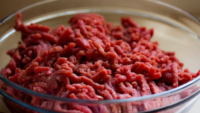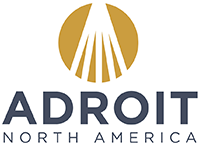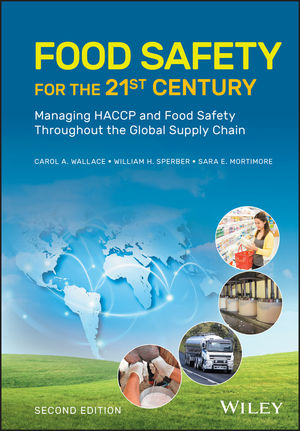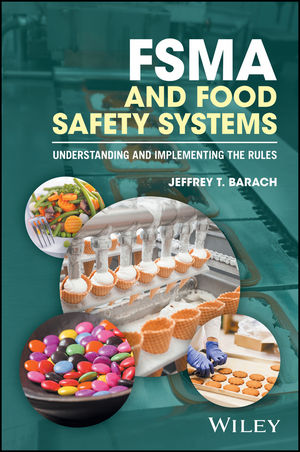Food Safety at the WHO: The Long Walk to Recognition

Mankind has long recognized the importance of food availability for survival and wellbeing: It is the concept of food security. Not surprisingly, this concept has been captured by the Universal Declaration of Human Rights,¹ adopted by the United Nations in 1948, where food availability is identified as a basic human right. However, it is extremely surprising that the concept of food safety, that is the absence of health and life-damaging or destroying properties, has not been emphasized in the Universal Declaration of Human Rights. Neither has it been mentioned 30 years later in the Health for All/Primary Health Care (PHC) paradigm² that was promoted by the World Health Organization (WHO).
One of the basic components of PHC refers explicitly to the “promotion of food supply and proper nutrition.” The masterminds behind the PHC paradigm must have felt at the time that the notion of safe food was implicit, not explicitly referring to the promotion of safe food supply. This implicitly turned out, however, to be a very unfortunate omission and the correction of it had to wait yet another 14 years. The Food and Agriculture Organization (FAO)/WHO International Conference on Nutrition,³ in 1992, was the first major intergovernmental event that referred explicitly to safe food and declared the “access to nutritionally adequate and safe food as a right of each individual.” (Emphasis added.)
Back in the 70s of the last century, there was a large confusion and ignorance around safe/unsafe food, its role in the epidemiology of (infant) diarrhea including cholera and whose responsibility it was to assure food safety. WHO, for example, was working in various fields of food safety since its inception. It had published a monograph on milk hygiene, provided advice regarding maximum levels of food additives and pesticide residues, and, jointly with FAO, developed international standards for safe food through its leadership in the Codex Alimentarius Commission (CAC). These activities were performed by different staff members who worked in different departments, reporting to different Directors and different Assistant Directors-General, without any collaboration between them.
It was only in 1978 that the World Health Assembly passed a resolution, requesting the Director-General to establish a Food Safety Programme.4 In 1980, a Senior Staff Member, I, was recruited as head of this newly established program that had at that time, however, no administrative structure. The Food Safety Programme was put into the Unit of Environmental Hazards and Food Protection within the Division of Environmental Health. In the Division of Communicable Diseases was the Unit of Veterinary Public Health which had a senior staff Position called Food Hygienist. There we are: The head of the newly established Food Safety Programme was placed in a Unit called Environmental Hazards and Food Protection while in a completely different Division, the Division of Communicable Diseases, worked a Scientist under the title Food Hygienist. The situation was chaotic and further exacerbated by the fact that there were no definitions for the terms, food safety, food hygiene, food protection, and food sanitation, which was also discussed.
At that time, WHO had three Expert Advisory Panels: one on Food Safety, one on Food Hygiene, and one on Food Additives and Contaminants without an understanding which panel was responsible for what.
The chief of the Veterinary Public Health unit claimed that the term food hygiene referred to microbiological aspects and the term food safety to chemical/toxicological aspects. Hence, there was no need for any collaboration between the food hygienist an the newly established Food Safety Programme. The dilemma with the definition of the terms food safety and food hygiene was only resolved in 1983, when the FAO/WHO Expert Committee on Food Safety provided a definition for food safety and decided that the terms food safety and food hygiene are synonymous.5 It also made the strong statement that illness from contaminated food was perhaps the most widespread health problem in the contemporary world and an important cause of reduced economic productivity.
However, later, the CAC, the international body which sets standards for foods provided further clarification for these terms. CAC defined food safety as “the assurance that food will not cause harm to the consumer, when it is prepared and eaten according to its intended use,” whereas food suitability is “the assurance that food is acceptable for human consumption according to its intended use.” It also defined food hygiene as “all conditions and measures necessary to ensure the safety and suitability of food at all stages of the food chain.” Thus, the term food hygiene covers two concepts: food safety and food suitability.
Further controversy was the claim of representatives of the veterinary profession that only they had the competence and, thus, the responsibility for food of animal origin while foods of non-animal origin could be dealt with by other professions, such as chemists, food technologists, and others. The question regarding the fate of such foods that were a mix of both components, such as meat, milk, fish or eggs, and flour, vegetables, or fruits, was never responded satisfactorily.
Back in the 80s of the last century, infant mortality due to diarrhea was extremely high with an estimated 5 million death per annum.6 WHO had established in its Division of Communicable Diseases a Unit on Control of Diarrheal Diseases. The work of this unit concentrated almost only on case management by advocating the application of oral rehydration of ill infants and children. Due to this effort, the mortality figures could be reduced to about 2 million in 2000, but morbidity remained virtually unchanged during this period. The medical community at that time did not consider contaminated food as a causative element of diarrhea. The same was true with regard to cholera. Only water was believed to play a role in the epidemiology of these two diseases Hence, in our program, we made a campaign to raise awareness on the role of food in infant diarrhea and the importance of health education in food safety.7-9
Nevertheless, it still took many years before the crucial role of food safety in health and development was recognized. This was because of the lack of cooperation among the different people and/or professions working in the health sector, which originates from competing interests (e.g., case management vs preventive measures) as well as from competition for the limited resources available.
Finally, the World Health Assembly, the governing body of WHO, consisting of the Ministers of Health of all its Member States, adopted in the year 2000 a Resolution on Food safety urging member states, among others, to integrate food safety as one of their essential public health and nutrition functions and to provide adequate resources to establish and strengthen their food safety programmes in close collaboration with their applied nutrition and epidemiological surveillance programmes.10
The challenge to get recognition and a comprehensive and integrated approach to food safety was such an uphill battle that we, in the WHO Food Safety Programme, compared our efforts to those of Philippe Ignace Semmelweis, today recognized as the father of handwashing, and playing such an important in control of COVID 19 as well as many foodborne infections.11
References
- https://www.un.org/en/about-us/universal-declaration-of-human-rights.
- “Primary Health Care,” Report of the WHO/UNICEF International Conference on Primary Health Care, Alma-Ata, USSR (Geneva: WHO, 1978).
- “International Conference on Nutrition,” World Declaration and Plan of Action, Rome, Italy (Geneva: FAO & WHO, 1992).
- https://apps.who.int/iris/handle/10665/91994.
- “The Role of Food Safety in Health and Development,” Report of a Joint FAO/WHO Expert Committee on Food Safety. Technical Report Series Nr. 705 (Geneva: WHO, 1984).
- Snyder, J.D. and H.M.H. Merson. 1982. “The Magnitude of the Global Problem of Acute Diarrhoeal Disease: A Review of Active Surveillance Data.” Bulletin of the World Health Organization 60: 605–613.
- Käferstein, F.K. 2003. “Food Safety: The Fourth Pillar in the Strategy to Prevent Infant Diarrhoea.” Bulletin of the World Health Organization 81: 842–843.
- Motarjemi, Y. et al. 1993. “Contaminated Weaning Food: A Major Risk Factor for Diarrhoea and Associated Malnutrition.” Bulletin of the World Health Organisation 71(1):79–92.
- WHO, Health Education in Food Safety: A Focus on Foodborne Disease. (Geneva: World Health Organization, Geneva, 2000).
- https://apps.who.int/iris/handle/10665/260181.
- https://www.infomeduse.ch/2020/04/24/sante-publique-en-periode-de-coronavirus-lheritage-de-philippe-ignace-semmelweis/.
F. K. Käferstein, D.V.M., Ph.D., was the former director, Department of Food Safety and Food Aid, WHO, Geneva.
Looking for a reprint of this article?
From high-res PDFs to custom plaques, order your copy today!








